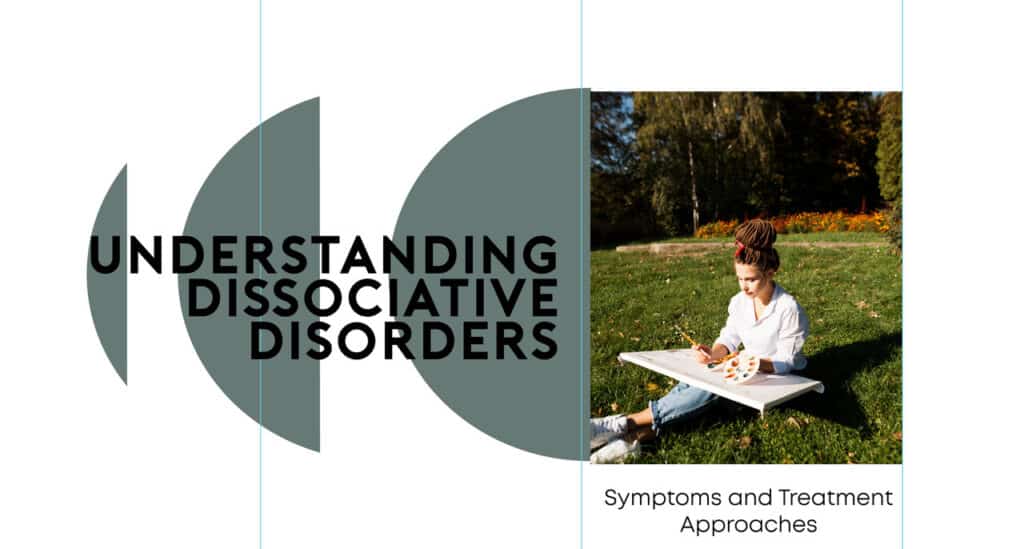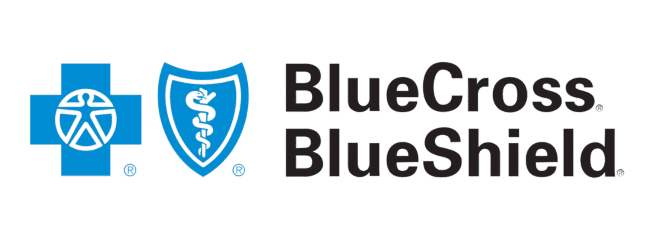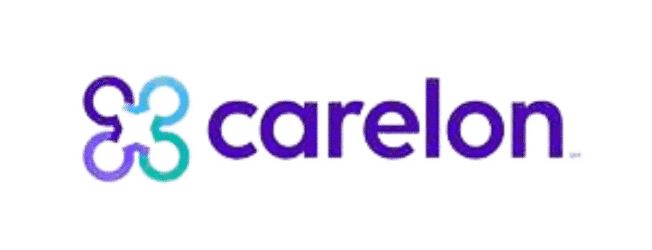Hey there! If you’ve clicked on this blog post, chances are you’re curious about dissociative disorders or maybe you’re looking for some answers. Well, you’re in the right place. Dissociative disorders can be complex and a bit mystifying, but understanding them is a crucial step toward managing and treating these conditions.
Essential Takeaways
- Dissociative disorders involve symptoms like memory loss, identity confusion, and altered perceptions.
- Diagnosis requires thorough evaluation and differentiation from other mental health issues.
- Effective treatment includes psychotherapy, medication for related conditions, and support strategies.
So, grab a comfy seat, and let’s explore the world of dissociation. We’ll discuss what it is, the different types, symptoms, how it’s diagnosed, and the best ways to tackle it.
What Are Dissociative Disorders?
Let’s start with the basics. Dissociative disorders are mental health conditions that involve a disconnection from reality. This can affect a person’s thoughts, identity, memory, and perception. Imagine you’re driving down the highway and suddenly realize you don’t remember the last few miles—dissociation is a bit like that, but it can affect much more than just a short-term memory lapse. These disorders are a way the mind copes with traumatic events or stress by separating itself from the current situation or memories.
Understanding dissociative disorders is essential because they often go hand-in-hand with other mental health conditions like anxiety disorders or depression, and they can impact daily functioning and overall quality of life. Many individuals may find themselves grappling with gaps in memory or feeling a sense of detachment during stressful situations, which can be debilitating.
Types of Dissociative Disorders
Dissociative Identity Disorder (DID)
You might have heard about Dissociative Identity Disorder (DID) in movies or TV shows, but it’s more than just a plot device. DID involves having two or more distinct identities or alternate personalities, each with its own way of perceiving and interacting with the world. People with DID might feel like they have different personalities, which can take over at various times. These identities may have their own names, ages, and personal history. It’s like having multiple versions of oneself, each one dealing with different aspects of life or trauma.
Dissociative Amnesia
Dissociative Amnesia is more than just forgetting where you put your keys. This type of dissociation involves significant memory loss that isn’t due to brain injury or disease. It usually centers around specific events, especially traumatic ones. For example, someone who’s experienced a severe accident might not remember the accident itself or details surrounding it. This kind of amnesia is a way for the brain to protect itself from overwhelming emotional pain. The formation of memory can be disrupted, leading to localized amnesia or even complete amnesia.
Depersonalization/Derealization Disorder
Have you ever felt like you’re watching your life from the outside or that the world around you doesn’t feel real? That’s what Depersonalization/Derealization Disorder can feel like. Depersonalization is when you feel disconnected from your own body or thoughts, while derealization is a sense of detachment from your surroundings. Both can make it feel like you’re not entirely present in your own life, which can be distressing and confusing. The depersonalization symptoms often accompany feelings of detachment, making everyday activities feel surreal.
Other Specified Dissociative Disorder (OSDD)
Other Specified Dissociative Disorder (OSDD) is a category for dissociative symptoms that don’t fit neatly into the categories above but still cause significant distress or impairment. This can include symptoms like dissociative fugue (where someone suddenly travels away from home and is unable to recall their past) or dissociative symptoms that don’t meet the full criteria for DID or other dissociative disorders.
Symptoms of Dissociative Disorders
Understanding the symptoms of dissociative disorders can help in recognizing them early and seeking appropriate help. Here’s a rundown of common symptoms across the different types:
Common Symptoms Across Types
- Memory Gaps: Missing chunks of time or having gaps in memory that don’t correspond to ordinary forgetfulness.
- Identity Confusion: Feeling uncertain about who you are or having a sense of your identity changing.
- Altered Perceptions: Experiencing the world as unreal or detached, feeling like you’re observing from outside your body.
- Emotional Numbness: Feeling emotionally disconnected from yourself or others.
- Derealization Symptoms: Experiencing feelings of detachment from reality or the world around you.
How Symptoms Affect Daily Life
Living with dissociative disorders can be challenging. Here’s how symptoms might impact daily life:
- Personal Relationships: Difficulty maintaining relationships due to memory gaps or altered perceptions can strain connections with family and friends.
- Work and School: Dissociation can affect concentration and memory, making it hard to perform well at work or school.
- Self-Care: Managing daily tasks and self-care can become difficult when you’re struggling with dissociation.
Diagnosing Dissociative Disorders
Getting a proper diagnosis is crucial for effective treatment. Here’s how professionals go about diagnosing dissociative disorders:
How Diagnosis is Made
- Psychological Evaluations: Mental health professionals use detailed interviews and questionnaires to understand symptoms and their impact on your life. Clinical interviews can help uncover past traumatic experiences or emotional abuse that may contribute to symptoms.
- Assessment of Symptoms: They evaluate how your symptoms align with diagnostic criteria for dissociative disorders.
- Differentiation from Other Conditions: It’s essential to rule out other mental disorders or medical conditions that might cause similar symptoms.
Challenges in Diagnosis
Diagnosing dissociative disorders can be tricky. Symptoms often overlap with other mental health conditions like post-traumatic stress disorder or borderline personality disorder. Additionally, some individuals might be hesitant to share personal experiences, which can complicate the diagnostic process.
Treatment Approaches for Dissociative Disorders
The good news is that dissociative disorders can be managed with the right treatment. Here’s a look at the most effective approaches:
Psychotherapy
- Cognitive-Behavioral Therapy (CBT): CBT helps individuals recognize and change negative thought patterns and behaviors that contribute to dissociation.
- Psychodynamic Therapy: This therapy focuses on exploring past trauma and how it affects current behaviors and emotions. It emphasizes the connection between trauma and the dissociative process.
- Trauma-Focused Therapy: For those with dissociation stemming from trauma, specialized therapies address the traumatic experiences directly.
Medication
While there’s no specific medication for dissociative disorders, medications might be used to manage symptoms of related conditions like depression or anxiety. Antidepressants or anti-anxiety medications can be helpful in alleviating secondary symptoms, such as those stemming from chronic trauma.
Support and Coping Strategies
- Support Groups: Connecting with others who have similar experiences can provide emotional support and practical advice.
- Self-Care Practices: Regular exercise, healthy eating, and mindfulness can help manage symptoms and improve overall well-being.
- Lifestyle Adjustments: Establishing a routine and practicing stress management techniques can be beneficial, especially in dealing with stressful events.
Integrative Approaches
Combining different therapies and holistic practices can offer a comprehensive approach to treatment. For instance, combining psychotherapy with mindfulness techniques or yoga can enhance overall mental health and resilience, providing tools to manage feelings of detachment and promote better daily functioning.
Living with Dissociative Disorders
Managing dissociative disorders is an ongoing process, and there are several strategies that can help improve daily life:
Coping Mechanisms and Strategies
- Practical Tips for Daily Life: Develop routines, use reminders or journals to keep track of tasks, and find ways to stay grounded in the present.
- Building a Support System: Reach out to trusted friends, family, or support groups who understand what you’re going through. This is especially important for those who have experienced abuse during childhood or traumatic situations.
- Self-Care and Wellness Practices: Engage in activities that promote relaxation and self-care, like meditation, hobbies, or spending time in nature.
Conclusion
Living with a dissociative disorder can be challenging, but understanding the condition and knowing that help is available can make a significant difference. Remember, seeking professional help is a crucial step toward managing symptoms and improving your quality of life.
Take the Next Step Towards Understanding and Treatment
If you or someone you know is struggling with dissociative disorders, don’t hesitate to seek professional help. Contact a mental health provider to discuss symptoms and explore treatment options. Remember, there’s hope, and with the right support and resources, managing dissociative disorders is entirely possible.
FAQs
- What are the most common symptoms of dissociative disorders?
Symptoms include memory gaps, identity confusion, and altered perceptions, like feeling detached from reality. - How are dissociative disorders diagnosed?
Diagnosis involves psychological evaluations, symptom assessment, and ruling out other conditions. - Can dissociative disorders be treated?
Yes, effective treatment options include psychotherapy, medication for related conditions, and support strategies. - What should I do if I think I have a dissociative disorder?
It’s essential to seek professional help for a proper diagnosis and to explore treatment options. - Are there support resources available for those with dissociative disorders?
Yes, there are support groups, online communities, and mental health organizations offering resources and support.












